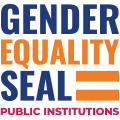
TEST YOUR INSTITUTION
Does your institution have plans to incorporate gender equality goals aligned to national, regional and international frameworks, including the Sustainable Development Goals (SDGs)? Rationale Public service is about having the physical, social, economic and political well-being of your country’s people at heart. Women and girls make up 50 percent of the population and their needs can differ from those of men. A Gender Strategic Plan and an Action Plan can guide your institution’s actions towards putting more gender-specific frameworks, strategies, goals, and human rights commitments into law and policy to meet these needs.

Is your institution’s senior management committed to gender equality and women’s empowerment? Do they demonstrate their commitment? Rationale Gender equality and the empowerment of women need to regularly be on the meeting agenda. This reflects management’s commitment at the highest levels of leadership. It also sends a strong message that the public institution is dedicated to giving women and men equal rights in the workplace and advancing gender equality in its sector of intervention.

Is there someone within your institution with the technical skills to ensure that women’s and men’s needs are considered when designing and implementing public policies? Rationale Systematically integrating gender perspectives into the work and the policies developed by public institutions requires specific knowledge and skills. Therefore, institutions should have within their teams, specialized staff.

Does your institution provide a supportive environment for the work-life balance of all personnel? Rationale Equally sharing the responsibilities of parenting, family caregiving, and domestic work between women and men promotes opportunities for women to actively participate in public life and contributes to changing discriminative stereotypes.

Does your institution promote an environment that is free of any kind of discrimination and harassment? Rationale In embracing a culture of gender equality, an institution is implying zero tolerance for sexism, abuse of authority, harassment or discrimination in any form.

Does your institution pay its workers equally for equal work done? Rationale Economic equality is a cornerstone of gender equality. For too long women have been paid – and continue to be paid – less than men for the same work, simply because they are women. Frequently, jobs traditionally performed by men are better paid than those performed by women, even when both have the same value for the institution. An institution committed to gender equality must ensure equal remuneration for the same job and for a job of the same value.

Does your institution ensure women and men are considered equally when it comes to decision-making? Rationale Women and men should have the same opportunities to be recruited and promoted, particularly to management and decision making positions. Ensuring gender equality when choosing the best person for the job will increase the likelihood of recruiting and keeping the most suitable staff.

Does your institution work with other public institutions and the community to advance gender equality? Rationale Collaboration with centers for women’s studies and research, government bodies, academia and educational institutions, the media, the private sector and various other bodies in the community ensures cooperation and joint strength in achieving gender equality across all sectors.

Can your institution demonstrate results implementing gender-sensitive policies and services? Rationale Helping public institutions achieve and demonstrate results to advance gender equality and women’s empowerment across services and policies is the main purpose of the Gender Equality Seal journey.





